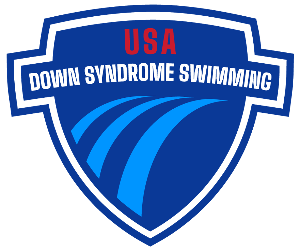Relay Policies and Protocols: Results-Oriented Approach
Relays are double the points and critical to any team’s success at the age group, collegiate, national, and international level. Relay selection is at the discretion of the deck coach(es) at each meet, and all athletes entered in the meet are to be available for relays if called upon. The primary goal of this policy is to ensure that relay swims are conducted with a balanced focus on individual and team performance, fostering a culture that values both personal achievements and collective success. This policy recognizes the significance of a results-oriented approach while cautioning against potential drawbacks that may arise when solely emphasizing end-of-season individual outcomes.
Guiding Principles
1. Success Breeds Success
- Acknowledge the notion that success at both individual and team levels can be interconnected.
- Recognize that historically successful teams attract swimmers with a results-oriented mindset, contributing to the overall team culture.
2. Balancing Individual and Team Focus
- Encourage athletes to maintain a balance between personal achievements and team performance.
- Emphasize the importance of team-oriented events where collective effort contributes to overall success.
3. Long-Term Success Mentality
- Support a results-driven approach
- Foster a mentality where success becomes an expectation, driving continuous improvement in daily training and championship seasons.
4. Competition-Based Training
- Implement competition-based training methods to prepare athletes for championship-level performances.
- Utilize relays as a platform for team cohesion, emphasizing collaboration and mutual support among team members.
5. Guard Against Individualization
- Caution athletes against misconstruing personal success with overall team performance.
- Emphasize the importance of team-oriented goals, particularly in relay events, where joint efforts contribute significantly to the team score.
6. Risk Mitigation
- Be mindful of potential drawbacks, especially the risk of disappointment if end-of-season results do not meet expectations.
- Address cultural issues by maintaining open communication and reinforcing belief in team values even during challenging times.
7. Cultivating Team Belief
- Promote an environment where success is not only a goal but an ingrained expectation.
- Encourage coaches to establish a culture that withstands temporary setbacks, fostering long-term belief among athletes.
8. Monitoring and Adaptation
- Continuously monitor the team dynamics and cultural aspects throughout the season.
- Be flexible and adaptive, making adjustments to the approach to maintain a healthy balance between individual and team-focused goals.
9. Relay Decisions:
- Relays will be put together to produce the fastest potential result on that day and ordered in a way that serves the race strategy that could produce the highest possible place in the event. Often the swimmers selected for the relays are simply those with the fastest personal best times in their leg of the race, particularly if those times were posted at the same meet as the relay. However, there are times when a swimmer is not at their best and another swimmer is performing at a higher level on the day or at the meet and relay swimmer selection becomes ambiguous. The coach will use their best judgement to select the relay in the same way a basketball coach chooses which players will take the court at the end of a game. Relay swimmers are often selected based on who has the "hot hand" at the meet.
- Sometimes, however, a relay is the first event of the meet, so other than recent dive and pacing times from the practices leading up to the meet, there's no way to tell who is "hot." If a relay is contested before any individual events are swum, relay personnel will be put together before the start of the competition based on previous best times and performances leading up to the meet.
- For relays swum after individual events have been swum at the meet, coaches will take meet performances into account. For instance, if the 400 Medley relay is swum after all the 100s of stroke have been contested, these 100 times will very likely determine relay selections. There are times, though, when coaches don't get to see the exact relay leg swum as an individual event before the relay takes place. A swimmer’s results in a race that isn’t an actual relay leg still helps project their performance on a relay leg, so swimmers' other event performances will be taken into account for relay selection as well.
- The coach has seen the athletes in training, under various levels of fatigue, repeatedly show their desire and ability to perform under pressure. These data points will give coaches the best the best idea of who can step up for the team under various circumstances. This also informs relay order as some people are better on certain legs than others depending on how they manage stressful situations. We may need to manage our race strategy to produce “clean water” or make sure we’ve got “gamers” in the water for anticipated “dog fights.” All of this will be considered when putting relays together.
- We may consider splitting a relay or not using a swimmer when it is in the best interest of both the swimmer and the team for the purpose of qualifying and scoring and / or scoring points at a higher level of competition.
These examples might help:
- If a swimmer A drops a significant amount of time in their 400 free and similar swimmer B does not, swimmer A might be selected for the 200 free leg of the 800 free relay over swimmer B who may have a best time that is currently faster than swimmer A in the 200 distance, even if swimmer A is not entered or will not have swum in the 200 free in that meet.
- Two swimmers may have similar times in a 100 event, but swimmer A has shown more power and initial speed in practice on the first 50 of that 100 than swimmer B. Even if swimmer B has a faster 100 time, swimmer A would be selected for the 50 in the 200 relay.
- If swimmer A shows that they are “on” in general through their performances, they may be selected for a stroke or distance of a relay leg that they are not entered in or don't normally compete in. If a swimmer has shown their abilities in training for a certain stroke or distance of a relay leg and is shining in their entered events that do not directly correlate to that relay leg, they may still be selected to compete on the relay, depending on what other swimmers are available and how they are performing at the meet.
- We had three swimmers within a half second of the Junior National standard in the 100 Back. Our “A” 400 Medley relay would have been faster if we had used two of the boys on the “A” relay. The Junior National Rules allowed us to enter a “B” 400 Meter Medley relay if we had 8 Individual qualifiers. On the last night of competition at the NCSA meet, we opted to split the relay and one boy was left out altogether in an effort to get one of the lead offs qualified for Junior Nationals.
By adopting this policy, relay swims become a strategic avenue for cultivating a results-oriented mindset within the team, contributing to both individual and collective achievements.






